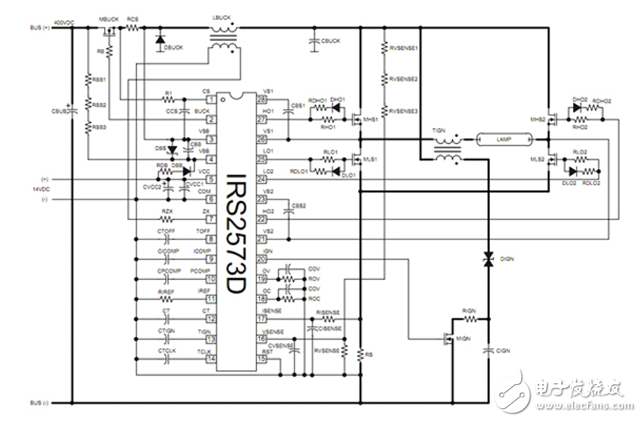
资料下载

工业照明电源控制
工业照明电源控制
在选择光源时,工业用户面临着许多压力。法规和经济压力迫使他们投资于节能照明,包括发光二极管(LED),可以提供长寿命,因此可以让公司降低维修成本。
然而,照明技术的改变并不是实现经济目标的必要条件。照明灯具的智能电源为工业用户提供了多种选择,使他们更容易选择适合应用的光源。
高强度放电灯(HID)金属卤化物灯已成为工业用户中最受欢迎的选择之一,尤其是在大面积需要有效覆盖的情况下,如装载舱和高天花板仓库。总的概念与荧光灯相似,因为当离子通过两个电极间的电流时,光是由离子产生的。然而,与荧光光源不同,荧光粉不需要将光子从紫外光转换成可见光光谱。离子在一个很窄的频率范围内释放可见光光子,使灯具有一种特殊的颜色。

Although simple in concept, HID lamps call for careful power control to maximize energy efficiency. They require a high initial voltage for ignition – around 3 to 4 kV if the lamp is cold, and as much as 20 kV if the lamp is still warm. As the lamp warms up, the current needs to be limited until it is fully running.
Before ignition, the arc gap inside the lamp presents an open circuit. But, once it ignites and starts to conduct, the voltage across the lamp drops sharply to around 20 V. Current, if not limited, can build up to a very high and damaging level. However, as the lamp warms up, the voltage – and output power – increases until it settles to a nominal value of around 100 V. After this point the current supplied needs to be maintained at a constant level that is well matched across the lamps in an array to avoid color and brightness variation.
声明:本文内容及配图由入驻作者撰写或者入驻合作网站授权转载。文章观点仅代表作者本人,不代表电子发烧友网立场。文章及其配图仅供工程师学习之用,如有内容侵权或者其他违规问题,请联系本站处理。 举报投诉
- 相关下载
- 相关文章






